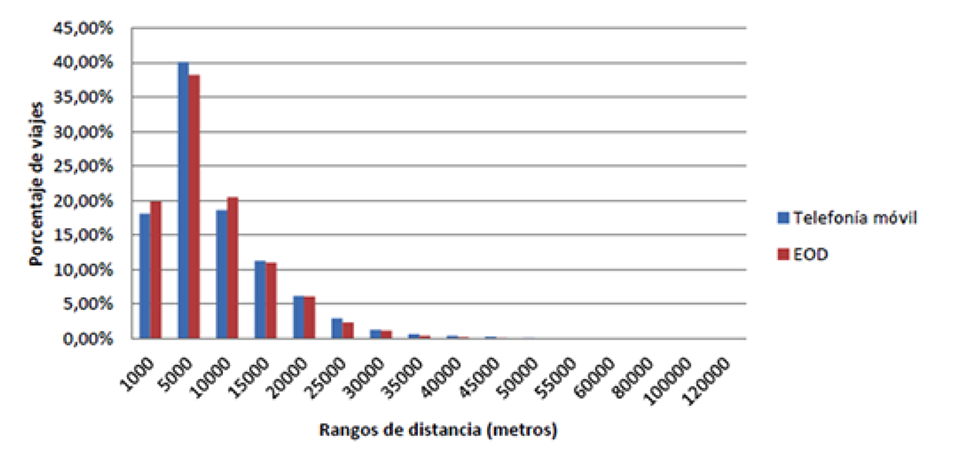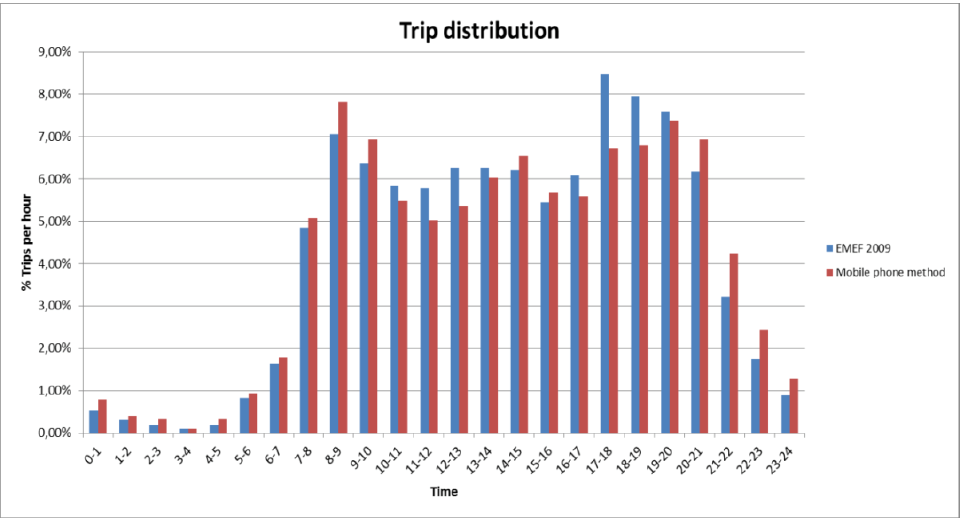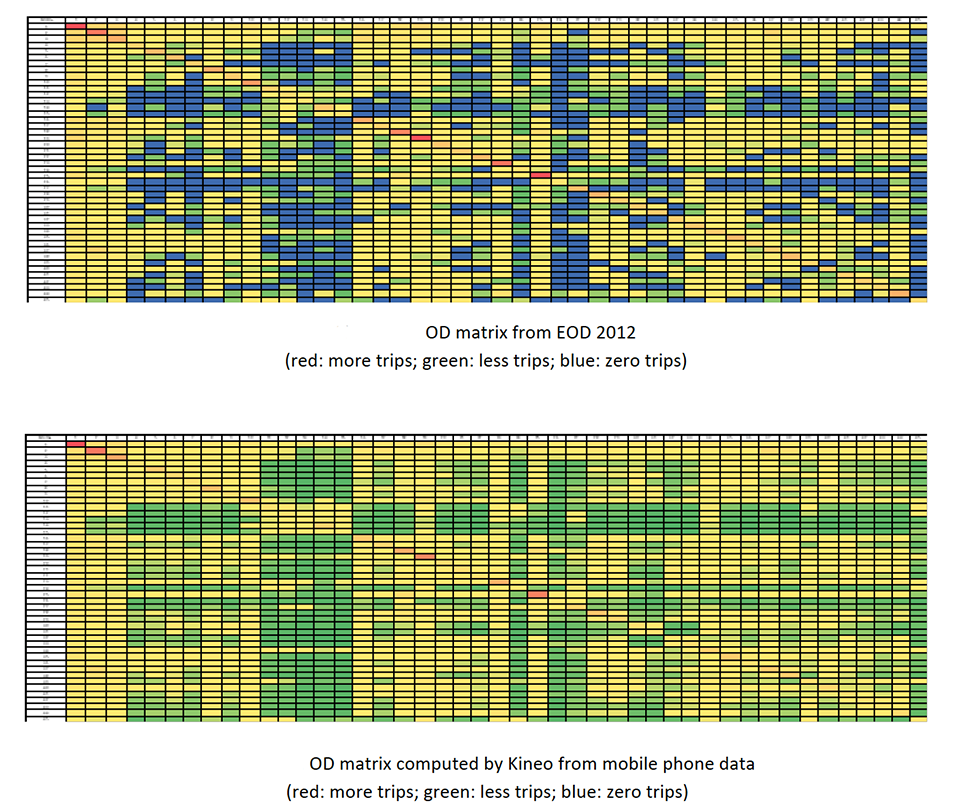The accuracy of mobile phone trip matrices

Not all mobile phone trip matrices are born the same [Part 4]
There are many studies comparing mobile phone based trip matrices with those obtained from other sources. Most of them appreciate the advantages of mobile phone data to generate mobility information, but there are different attributes to analyse.
There have been a number of studies comparing mobile phone based trip matrices with those obtained from other sources, mostly household surveys. Just searching “validation of mobile phone trip matrices” yields a large number of papers and reports. Most of them praise the advantages of mobile phone data to generate mobility information: passive data collection, large sample size, short time to results, capture of specific dates and also day-to-day variability.
One of the issues in validation is, of course, the accuracy of the contrasting trip matrices. In other words: how valid is a comparison between a 2% sample household travel surveys against a 20% sample from mobile phone data. As none of them is the “ground truth” most of the comparisons just look for how well some aggregation of the trip data from both sources compares.
Many of the comparisons are made against observed Trip Length Distributions. For example, the figure below shows the proportion of trips of a particular length range (in metres) in the case of Santiago in 2016, contrasting the results from mobile phone (“Telefonía móvil”) with those from the Household Travel Survey (“EOD”).

As can be seen, the trip length distributions match well. Another test is to compare the number of trips generated at different times of the day from both sources. These are shown again comparing mobile phone tips with Household Survey data. In this case, for Barcelona.

It is interesting to note that the number of trips is similar in the morning peak but differs at lunchtime and during the evening, showing trips later than reported. This can be explained by the greater difficulty in remembering these times accurately.
Comparing trip matrices
In the case of Santiago, Chile, we also compared trip matrices from mobile phone data against the 2012 Household Travel Survey (EOD 2012) at 45 Borough (Comuna) level, both expanded to the same population (the final matrices were produced at over 860 zones). The next two figures paint the number of trips in each cell so that blue indicates zero trips and red the maximum number of trips (usually intra-zonal). It clearly shows how the EOD 2012 has plenty of empty cells where no trips have been observed whereas the mobile phone trip matrix has values in all 2000 plus cells.

In recognising the constraints of this data sources, a recent UK comparison against Road Side Interview (RSI) and other data collection methods[1] concludes: “…using the mobile phone data, when systematically refined and adjusted using independent data sources to address various known limitations and biases, does not seem to be either biased or less accurate than conventional methods. It has also been observed that areas of the model where no RSI data or other similar observed data are available, use of mobile data could result in a more consistent estimate of trips, benefiting from a significantly larger sample size”.
Knowing that not all mobile trip matrices are the same, we can quote a recent example from a tender for such matrices in Spain. In this case, all proposals had to provide an example trip matrix for Madrid. These examples were then given to an independent auditor to judge their quality blind, without disclosing the source. The trip matrix provided by Nommon in joint venture with Orange (MNO) was considered the best with a top rating of 12. The samples provided by other bidders (two of them mobile phone companies) were rated from 7 to nil.
Overall, efforts to contrast mobile phone trip matrices against experience and other data sources support the idea that not all such trip matrices are born the same. Nevertheless, good data processing algorithms and an in-depth understanding of how the trip matrices will be used can result in high-quality and usable movement records and patterns.
Read “Specifying mobile phone trip matrices: Not all mobile phone trip matrices are born the same [Part 5]“
[1] Reza Tolouei, Stefanos Psarras, Rawle Prince, “Origin-Destination Trip Matrix Development: Conventional Methods versus Mobile Phone Data“, Transportation Research Procedia, Volume 26, 2017, Pages 39-52, ISSN 2352-1465, https://doi.org/10.1016/j.trpro.2017.07.007


